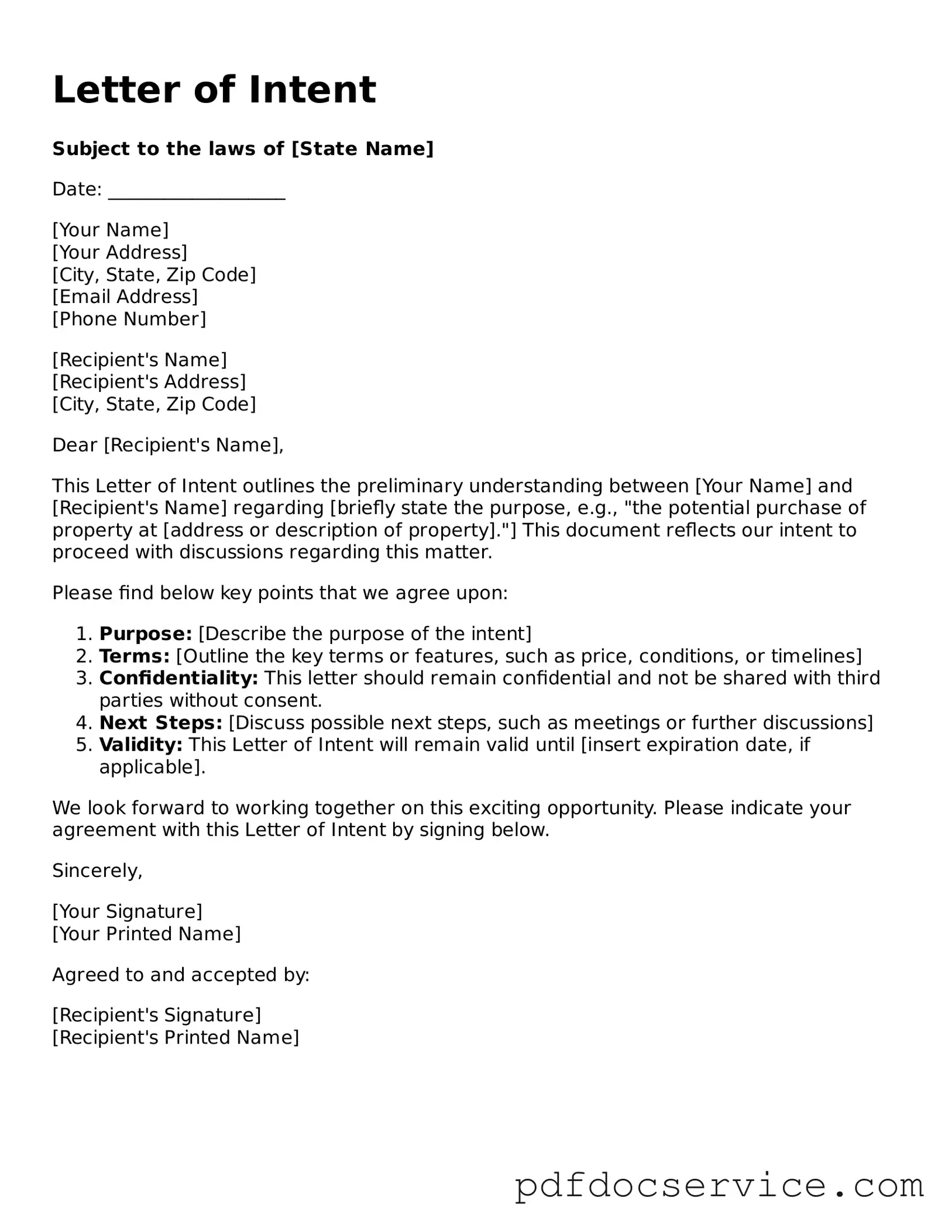Blank Letter of Intent Form
A Letter of Intent (LOI) is a document outlining the preliminary understanding between parties who intend to enter into a formal agreement. This form serves as a roadmap for negotiations, detailing key terms and conditions before a binding contract is finalized. By clarifying intentions, an LOI helps to minimize misunderstandings and sets the stage for successful collaboration.
Open Letter of Intent Editor
